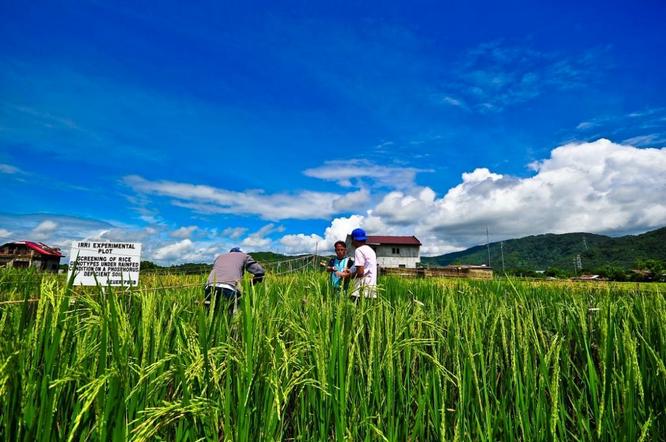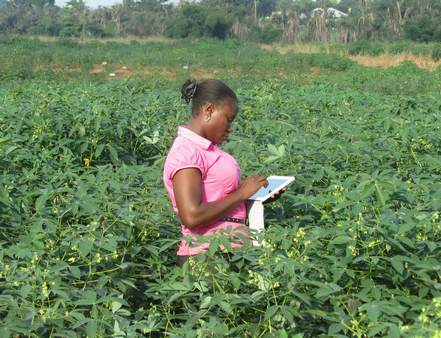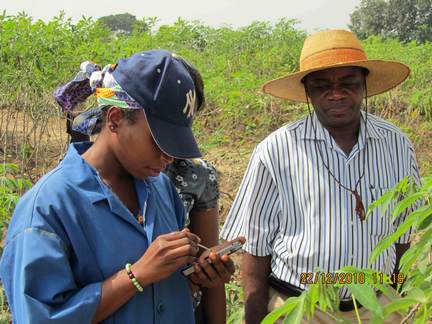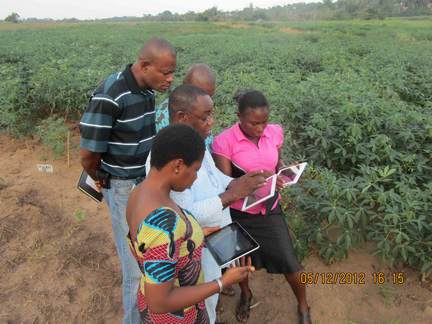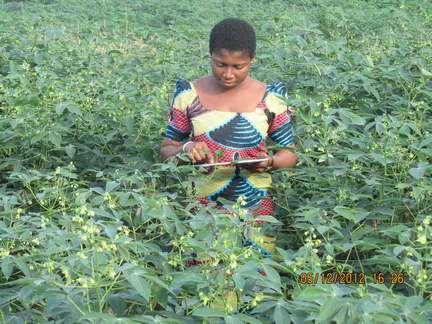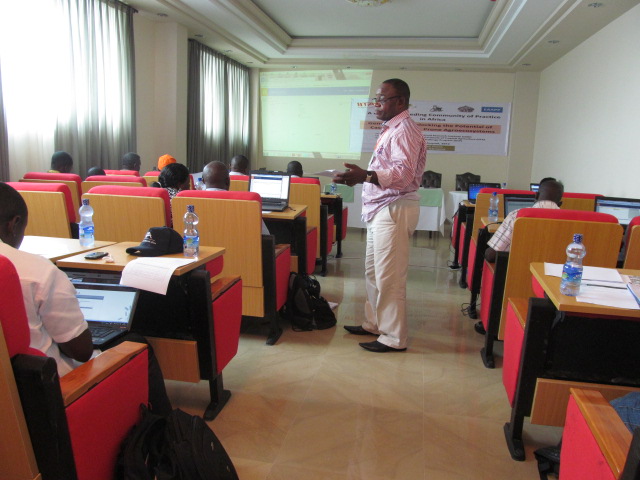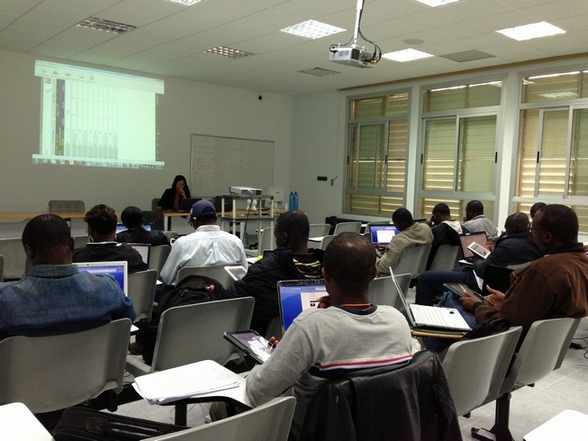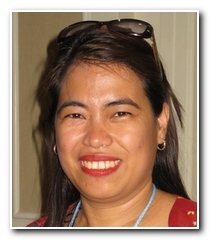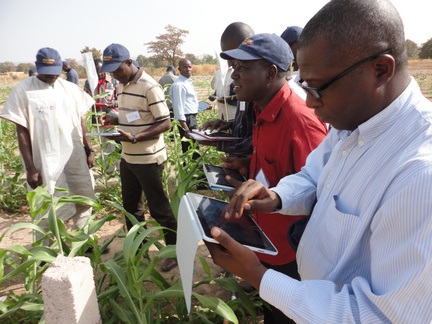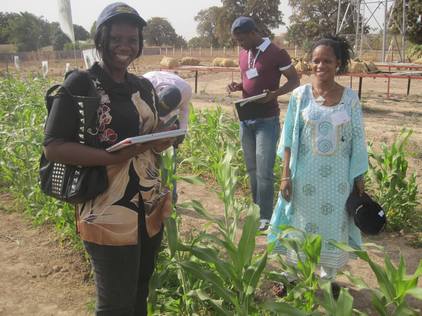Long legs: our longest running capacity-building marathon’s end is in sight and a new breed of breeders is ready and set to go
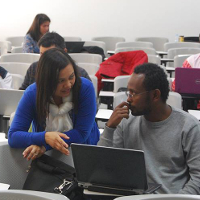 As we ‘speak’, the Integrated Breeding Multiyear Course (IB–MYC) is in its final session, reaching its close after three intensive years. This last gathering runs from 3rd to 14th November 2014, and as always is hosted by our partners IAMZ–CIHEAM (the Mediterranean Agronomic Institute of Zaragoza, Spain). IB–MYC is unusual in its approach, but by taking a risk and investing in long-term in-depth training, GCP has shown that IB–MYC is a powerful model for capacity building with profound impact. Congratulations to our marathon runners as they approach the finish line… and all the best for an ‘integrated breeding’ future!
As we ‘speak’, the Integrated Breeding Multiyear Course (IB–MYC) is in its final session, reaching its close after three intensive years. This last gathering runs from 3rd to 14th November 2014, and as always is hosted by our partners IAMZ–CIHEAM (the Mediterranean Agronomic Institute of Zaragoza, Spain). IB–MYC is unusual in its approach, but by taking a risk and investing in long-term in-depth training, GCP has shown that IB–MYC is a powerful model for capacity building with profound impact. Congratulations to our marathon runners as they approach the finish line… and all the best for an ‘integrated breeding’ future!
Breeders develop new varieties of crop through several methods. IBP has developed new varieties of breeders through the IB-MYC programme.”
— Johnson Adedayo Adetumbi: IB–MYC participant, research fellow at the Institute of Agricultural Research & Training (IAR&T), Obafemi Awolowo University, Nigeria, and breeder working on cowpeas, kenaf, maize and soya beans
IB–MYC: integrated, intensive, incomparable
IB–MYC differed from most other courses in two important ways, both reflected in its name: its ‘integrated breeding’ curriculum and its ‘multiyear’ timescale. Implemented by GCP’s Integrated Breeding Platform (IBP), the course aimed to empower breeders in developing countries to adopt molecular-breeding techniques. The ‘integrated’ approach to making this happen meant equipping students not only with the latest knowhow on molecular breeding itself, but also hands-on training in and effective tools for data management and analysis.
Course participant Samuel Adelowo Olakojo, Head of the Cereals Improvement Programme at IAR&T and maize breeder, is an enthusiast of IBP’s Breeding Management System (BMS). “My perception about data management is that it helps the breeder to plan their work very easily without stress. The time you take in thinking how to fashion out the design of the trials – you can actually get that done very quickly, very precisely,” he says. “Secondly… after you have produced your output, with minimal editing you can transfer your data to the preparation platform for publishing it. You don’t have to sit down writing everything again,” he adds. “The presentation that comes out of it now seems more graphical. And when you present reports in a graphical, pictorial form… people are enlightened, quickly.”
Since IB–MYC began in August 2012, the participants have each received two weeks of intensive face-to-face training per year. The participants were divided between three annual training sessions, broadly reflecting the three target regions for the course of Eastern and Southern Africa, West and Central Africa, and South and Southeast Asia. In between these sessions they were expected to work on assignments and project, with ongoing in-depth support including online resources from IBP. While well-supported, it was a demanding course, with students expected to pass each year and complete their assignments as a precondition to proceeding to the next year.
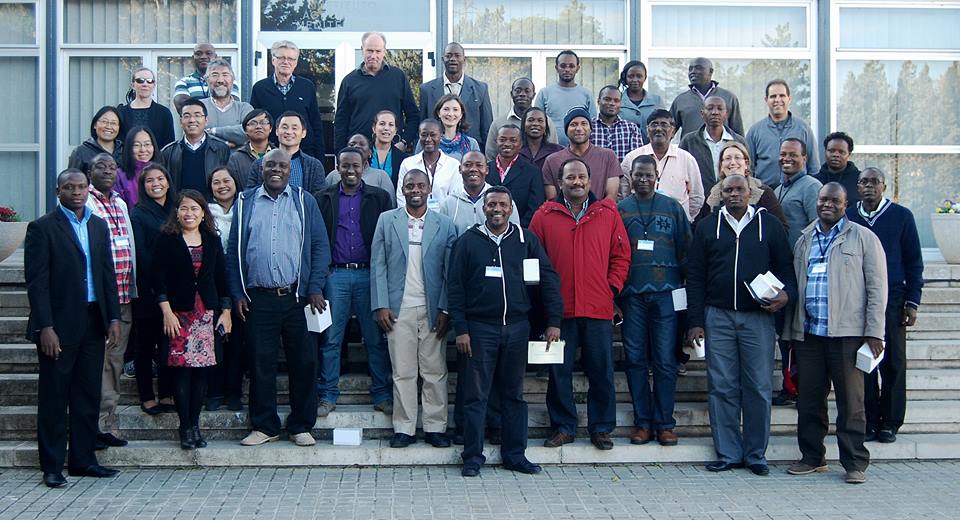
More than forty participants came together in November 2014 for the final IB–MYC training session, hosted by IAMZ. For more photos, see the IAMZ Facebook page.
Taking the slow train to knowledge that sticks
Just as for the participants, this three-year course was also a major commitment for GCP, and – being unlike anything that had gone before – a risky investment of funds and efforts. However, this long-distance marathon has had some special advantages over the quick sprints of more conventional training courses, whose length is normally measured in weeks.
Rather than simply imparting knowledge that is forgotten as quickly as it is learnt, the practical focus, ongoing support and extended time-frame of IB–MYC ensured that participants were able to test and see the value of what they were learning within their own breeding activities, leading them to adopt useful technologies, tools and practices as an integral part of their work – and, it is hoped, becoming advocates, trainers and mentors themselves. Furthermore, as trainees have got to know each other and build relationships over the years, they have woven true communities of practice, springboards for sharing information and working together into the future.
Of course, not everyone has made it to the finish line. A few participants have dropped out over the years as they have changed jobs and directions, and some have even flunked the course. But the great majority have stayed the distance, and with both trainers and trainees convinced of IB–MYC’s value.
Seeds for the future in IB–MYC’s IAMZ roots
Not least of the relationships that have flourished during the course is GCP’s partnership with IAMZ, which also contains the seeds of one of the ways IB–MYC will live on into the future, after GCP’s planned close in December 2014. “We are working with IAMZ to continue that collaboration through IBP,” says Ndeye Ndack Diop, GCP’s Capacity Building Leader. “IAMZ has decided to include the BMS within… the short training course they provide, and that is of course a big endorsement for us that we appreciate. But beyond that, right now Ignacio [Romagosa], the Director of IAMZ, is working towards developing one project with different partners at the European level, where IBP also will be taking part.” This will use both the training material that IBP has developed in the course of these three years, and also the BMS. Says Ndeye Ndack: “the programme that he’s thinking of will be targeting breeders, in which case we believe BMS will be a good tool for them.”
Watch IAMZ’ interview with Ndeye Ndack below (or on YouTube) for more, including GCP’s approach to capacity building, how the GCP-IAMZ relationship began, and the stellar support that IAMZ has provided.
So even as we come to the finish line of this first IB–MYC marathon with the final training session, many more races are yet to be run and many new pathways are opening up for Johnson’s “new varieties of breeders” – and perhaps a new variety of trainers too. We at GCP would like to take this opportunity to give our special thanks to our friends at IAMZ–CIHEAM, and to thank and congratulate all IB–MYC participants and trainers for their commitment, hard work and fantastic achievements.
Links
- For more on the IB–MYC model, IBP and BMS, plus some insights into the issue of brain drain, see our latest presentation on SlideShare, ‘Capacity Building: Gain or Drain?’, presented by GCP Director Jean-Marcel Ribaut at the recent Tropical Soybean for Development Workshop.
- Our recently published 2013 Annual Report section on capacity building focussed on IB–MYC, as did the same section in 2012, so follow the links below for more in-depth analyses of our approach, achievements, and lessons learnt.
2013 – read online | 2013 – download PDF | 2012 – read online | 2012 – download PDF - Retooling developing-country crop breeders: IB–MYC 2014 on course (News and Updates, May 2014)
- GCP’s capacity-building homepage









